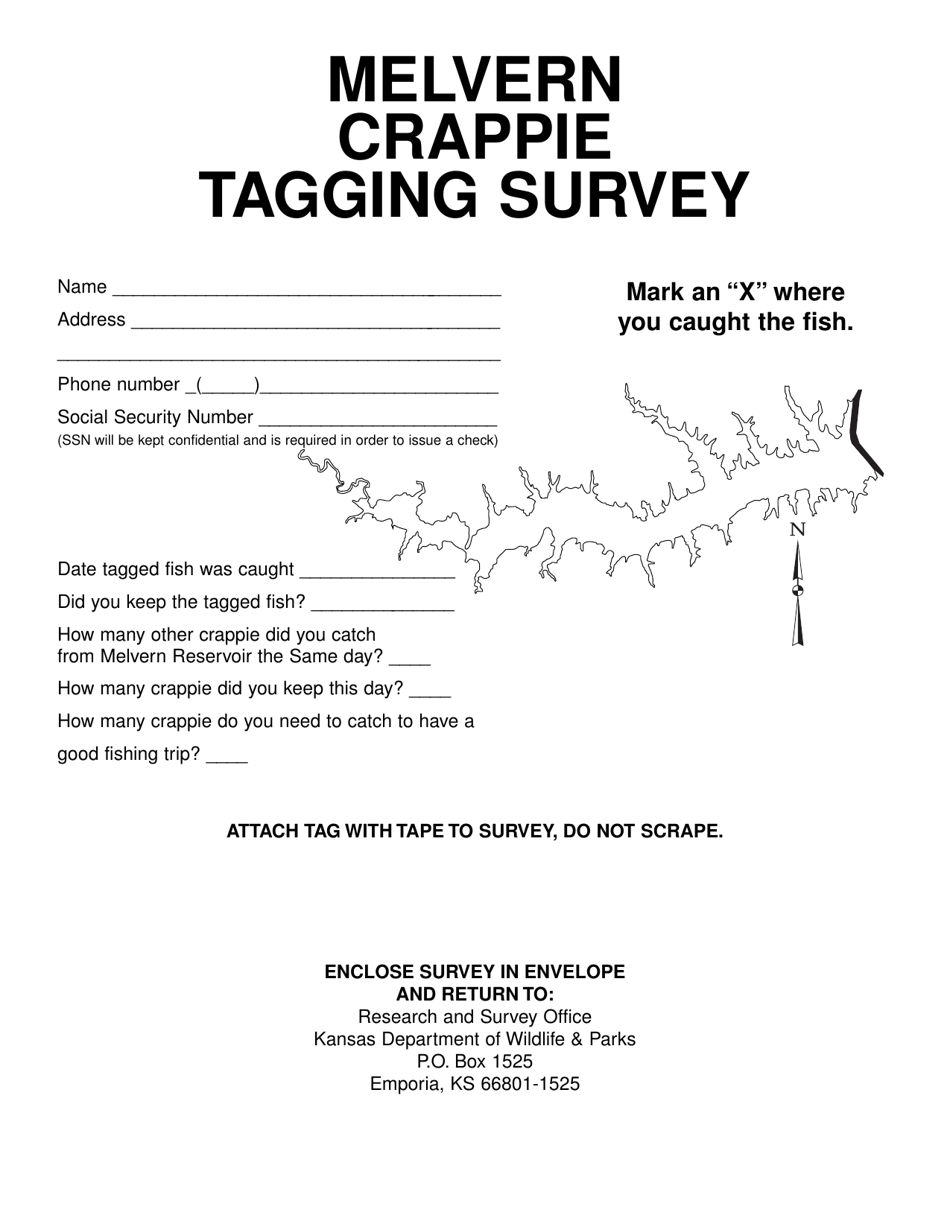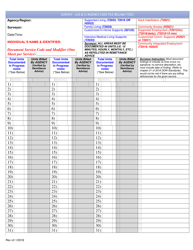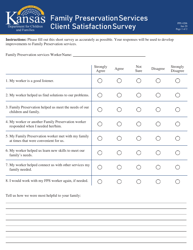Melvern Crappie Tagging Survey - Kansas
Melvern Crappie Tagging Survey is a legal document that was released by the Kansas Department of Wildlife, Parks & Tourism - a government authority operating within Kansas.
FAQ
Q: What is the Melvern Crappie Tagging Survey?
A: The Melvern Crappie Tagging Survey is a research project conducted in Kansas to study the crappie population in Melvern Reservoir.
Q: Why is the crappie population in Melvern Reservoir being studied?
A: The crappie population in Melvern Reservoir is being studied to gather data and insights on their abundance, growth rates, and movement patterns.
Q: Who is conducting the Melvern Crappie Tagging Survey?
A: The Melvern Crappie Tagging Survey is being conducted by the Kansas Department of Wildlife, Parks and Tourism.
Q: How is the tagging survey conducted?
A: During the survey, crappie are caught, tagged with a small metal tag, and released back into the reservoir.
Q: Can the public participate in the tagging survey?
A: Yes, members of the public can participate in the Melvern Crappie Tagging Survey by reporting tagged crappie they catch to the Kansas Department of Wildlife, Parks and Tourism.
Q: What information should be reported when catching a tagged crappie?
A: When catching a tagged crappie, the angler should report the tag number, date of capture, and location of the catch.
Q: Why is it important to report tagged crappie catches?
A: Reporting tagged crappie catches is important as it provides valuable data for the research project, helping scientists understand the crappie population dynamics in Melvern Reservoir.
Q: Are there any rewards for reporting tagged crappie catches?
A: Yes, there is a reward program in place for reporting tagged crappie catches, which includes entered into a drawing for a chance to win a prize.
Q: Is there a size or catch limit for crappie in Melvern Reservoir?
A: Yes, there are regulations regarding size and catch limits for crappie in Melvern Reservoir. Anglers should consult the fishing regulations for specifics.
Form Details:
- The latest edition currently provided by the Kansas Department of Wildlife, Parks & Tourism;
- Ready to use and print;
- Easy to customize;
- Compatible with most PDF-viewing applications;
- Fill out the form in our online filing application.
Download a printable version of the form by clicking the link below or browse more documents and templates provided by the Kansas Department of Wildlife, Parks & Tourism.



















